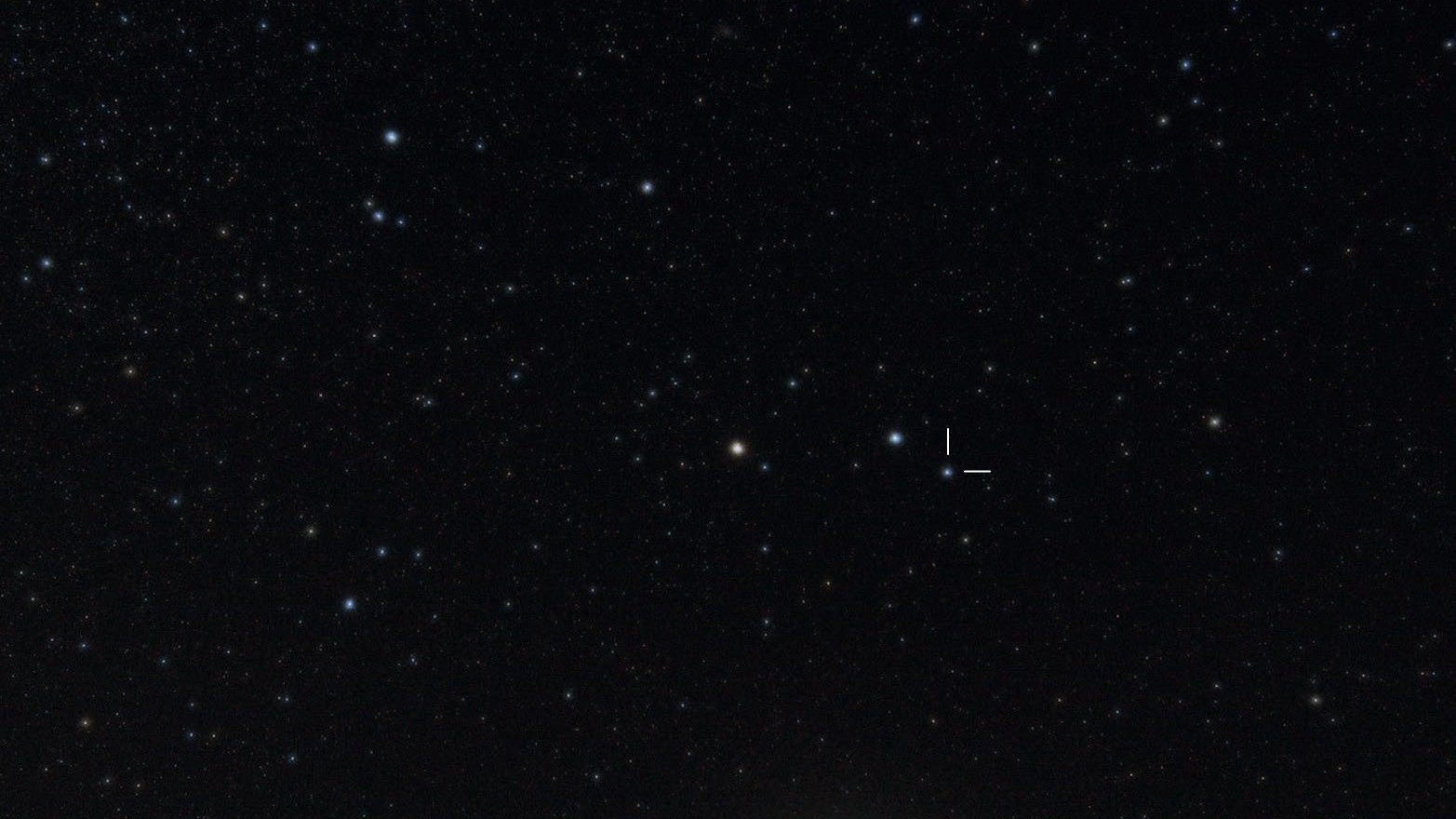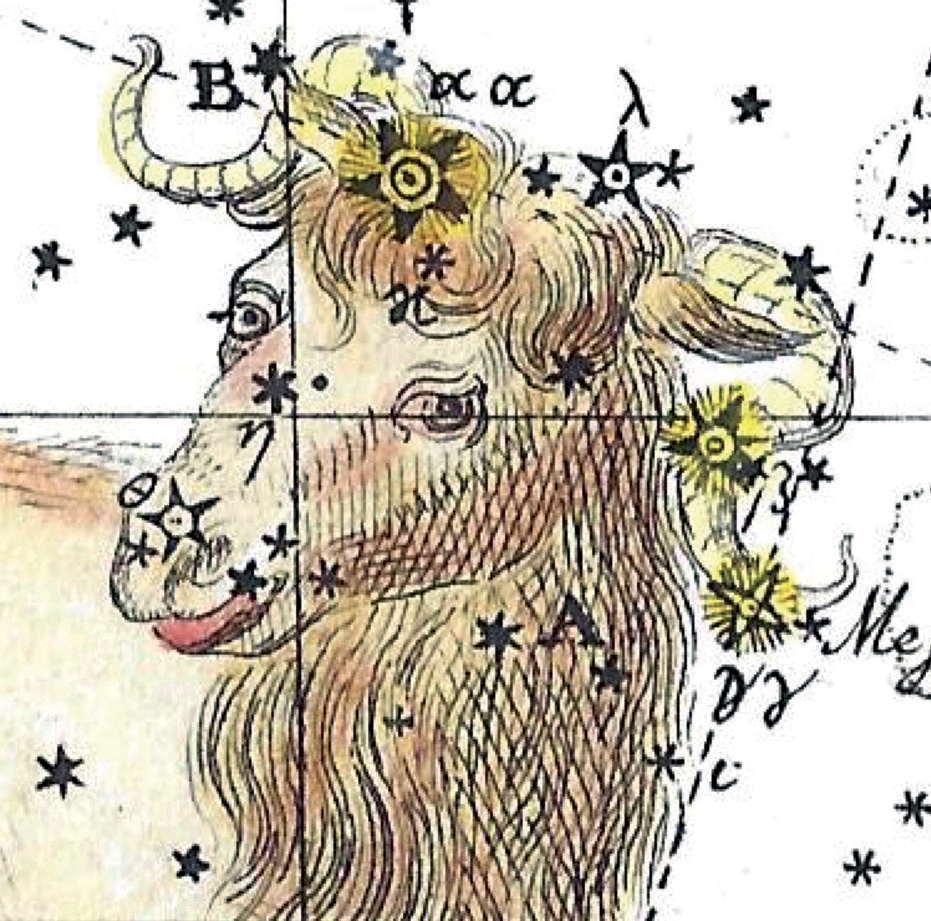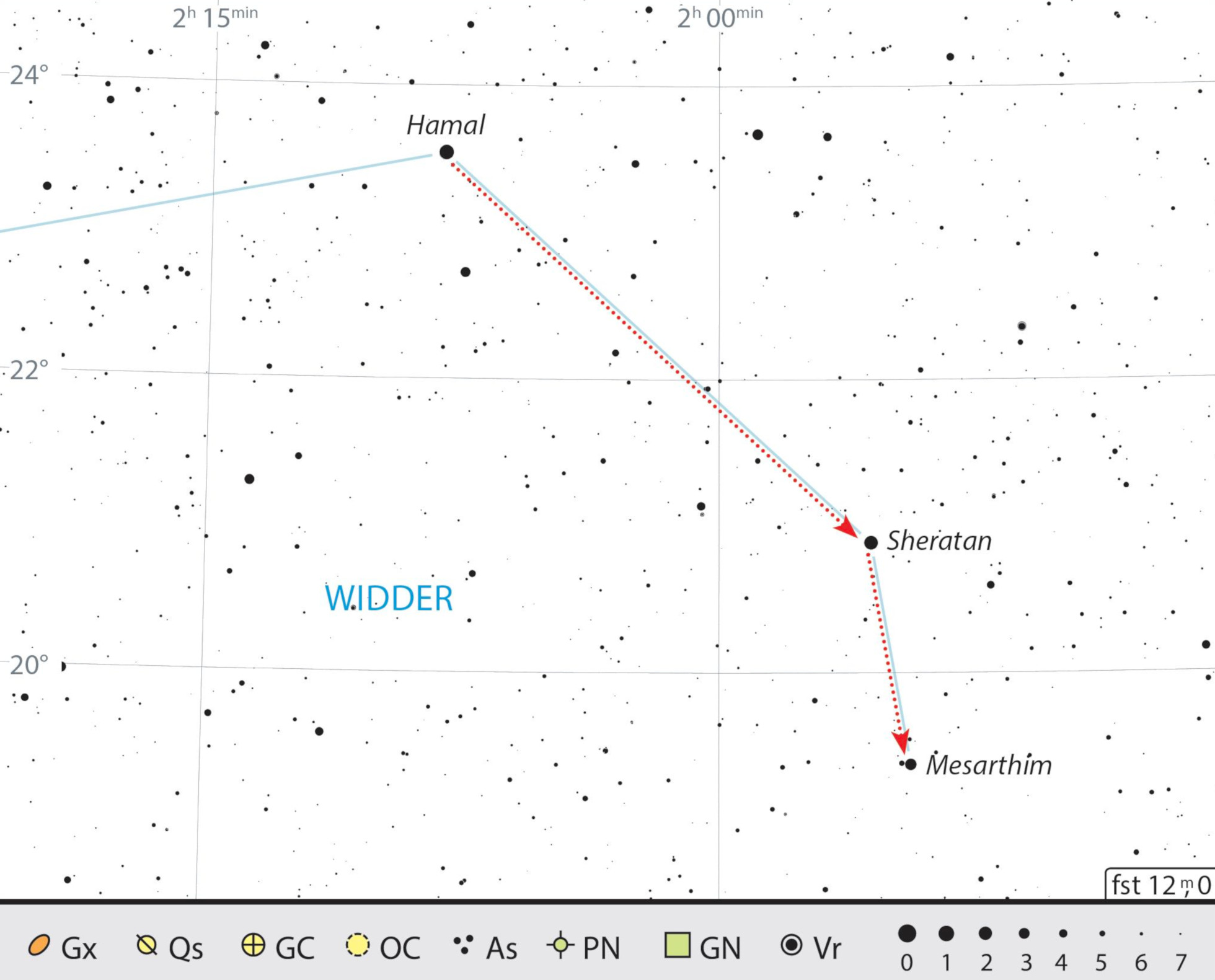Gamma Arietis – a highlight of the autumn city night sky
Gamma Arietis (or Mesarthim) is one of the first binary stars to be discovered with a telescope, and is a highlight of the autumn city night sky.
 γ Arietis lies at the left horn of the constellation of Aries. Bernhard Hubl
γ Arietis lies at the left horn of the constellation of Aries. Bernhard HublIn American binary star reference works, γ Arietis (or Mesarthim) is regarded as a showpiece binary star. The reason for this is the perfect distance between the two components of 7.5 arc seconds - not too far and not too close - and above all the almost identical brightness (magnitude 4.5) and colour (white) in which γ Arietis reveals itself to the city astronomer in the late autumn night sky.
A binary star at the horn of Aries
 Illustration of Aries from Bode's star atlas (Vorstellung der Gestirne) from 1805.
Illustration of Aries from Bode's star atlas (Vorstellung der Gestirne) from 1805.γ Arietis is easy to find. In the light-polluted city sky you should first visit the Pleiades, which are themselves worth a trip. From the Seven Sisters you can star hop with the naked eye directly to Aries’ head, namely to Hamal (α Arietis) which lies to the west, then approximately three degrees south-west to Sheratan (β Arietis). At magnitude 2 and 2.5 respectively, both stars should be easy to locate. Mesarthim is to be found 1.5 degrees south of β Arietis, located at Aries’ left horn. Robert Hooke, the English scientist, is said to have discovered the binary star character of Gamma Arietis as long ago as 1664. Our target object is therefore considered to be one of the first-known binary stars.
In order to get acquainted with Mesarthim, we should begin our observation with the telescope using 50x magnification - it is already possible to separate the two components, with 80x this becomes a certainty with a clear narrow division between them. The binary star then displays its full beauty to the observer from 100x magnification: two stars that are absolutely equally bright and of the same size, glistening like two spotlights in the darkness.
Is a third component visible in the city night sky?
By the way, the two components of γ Arietis, which are located around 204 light-years away from us, orbit each other at a distance of 500 AU (astronomical units) around every 5,000 years, thus almost certainly forming a binary system. Of interest is also that γ Arietis has a third component. However, at a distance of 221 arc seconds and with an apparent magnitude of 9.6, this star is considerably further away from its two clearly visible companions and is at the limit of what is possible for a city astronomer. In this author's log there is the note "at 85× very faint star in the field of view – far away".
Whether this observation is the third component is uncertain. On page 51 of the Interstellarum Deep Sky Atlas, a star of the appropriate size can be seen to the west of γ Arietis. Perhaps this is the third component?
 Finding chart for Mesarthim in the constellation of Aries. J. Scholten
Finding chart for Mesarthim in the constellation of Aries. J. ScholtenAuthor: Karl-Peter Julius / Licence: Oculum-Verlag GmbH
